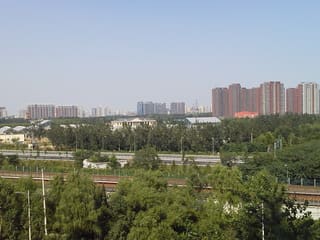Call for Papers (Abstract Submission Deadline: 22 Sept. 2013)
11th East Asian STS (EASTS) Network Meeting, 13-16, Nov. 2013
‘Large Scale Disaster and STS, and the Future of Science & Technology’
「大規模災害と科学技術社会論、そして科学技術の未来」
East Asian Community has shared recent experiences of terrible earthquakes of 921 at Taiwan in 1999, Sichuan in 2008, Tohoku in 2011 &c. Though large scale disasters are unavoidable, we have observed the case that proper scientific and technological action and decision making was not taken. In addition, as Fukushima, technology itself could cause huge damage to the society. We have recognized the limit of technological counter measure like coastal dykes against tsunami. Is not it time to think about these problems from STS perspectives? East Asia is an area where science and technology based industry develops rapidly. We have scientific, technological and societal potential to tackle these problems. The meeting aims at analyzing light and shadows of science and technology in our region, and at renewing theoretical framing of STS for better future of ST in the world.
Venue:
Conference rooms at‘Titech Front’and lecture rooms of
Tokyo Institute of Technology (Ookayma Campus, 東京工業大学・大岡山地区)
2-12-1 Ookayama Meguro-ku, Tokyo Japan (東京都目黒区大岡山2-12-1)
http://www.titech.ac.jp/english/about/campus/index.html
Program
13 Nov. (Wed) Arrival
14 Nov. (Thurs) Academic Tours:
Option 1: Tohoku Tsunami Damaged Area and Zone near Fukushima Daiichi
Option 2: Miraikan Science Museum (未来館) at Tokyo Water Front
http://www.miraikan.jst.go.jp/en/
15 Nov. (Fri.) Whole Day Conference and Reception (Free of Charge)
16 Nov. (Sat.) Conference in the morning. Adjourn at around noon.
Abstract Submission
Please submit 300 words abstract to Prof. Hideto Nakajima until 22 Sept. 2013.
(e-mail nakajima.h.ab[att]m.titech.ac.jp please change [att] to @)
Abstract should include the title, name and affiliation, e-mail address and keywords.
The organizing committee will write you the result (acceptance/ reject) soon.
Full texts of the papers are not requested.
Abstract may be printed into proceedings of the meeting.
Official Invitees and General Participants
Each community of Korea, Mainland China and Taiwan, has already selected and sent the list of official invitees (invited speakers, 公式招待者) to the organizing committee. They will be contacted by the organizing committee. Official invitees are exempted from both registration fee and tour fee except for train transport fare in Tokyo.
‘General participants’ mean those who are not official invitees and those whose papers are accepted by the organizing committee. General participants are kindly asked to cover all the cost to join the conference, including airfare, accommodation, transport fare, registration fee, and so on.
Registration and tour fee for general participants:
Registration: 2,000 Yen (please pay in cash at the reception desk)
Tour fee for Option 1 (Tohoku):
Please buy Shinkansen return ticket by yourself.
You also need to pay accommodation fee.
(About 30,000 Yen in total for Shinkansen and accommodation).
Local bus tour (limited capacity) will be paid by the organizing committee.
Tour fee for Option2 (Miraikan):
Local transport fare only.
* Details for tours will be announced in due courses.
(Note 1) Those who needs visa to enter Japan, please contact the organizing committee.
(Note 2) Annual Meeting of JSSTS (Japanese Society for Science and Technology Studies) will be held on 16-17 Nov. 2013 at the same campus. All the participants of EASTS Meeting can make free access to the sessions. If you want to join JSSTS banquet in the evening of 16, please pay 6,000 yen at JSSTS annual meeting reception desk.
Organizing Committee:
Chair: Hideto Nakajima, Tokyo Institute of technology 東京工業大学・中島秀人
e-mail nakajima.h.ab[att]m.titech.ac.jp please change [att] to @
Fax +81 3 5734 3255
Postal address: Box W9-56, 2-12-1 Ookayama Meguro-ku, 1528552, Tokyo Japan
Vice Chair: Togo Tsukahara, Kobe University 神戸大学・塚原東吾
Secretary: Masashi Shirabe, Tokyo Institute of Technology 東京工業大学・調麻佐志
Ryuma Shineha, Sokendai University 総合研究大学院大学・標葉隆馬


















